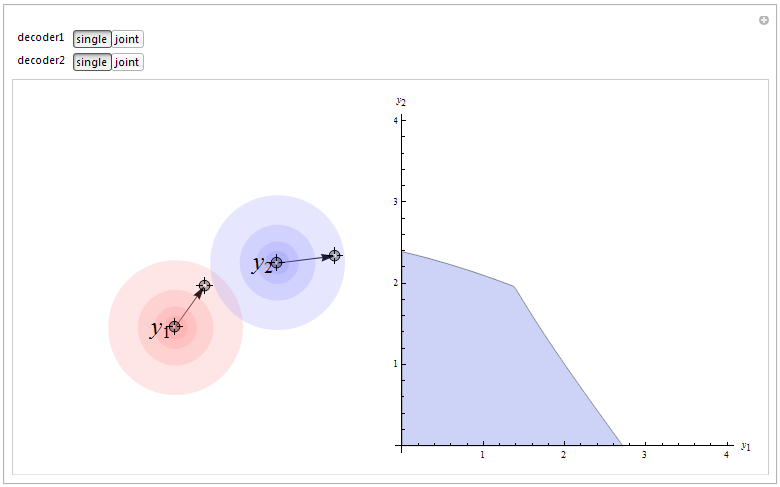Abstract.
Much research in networking, in areas such as TCP congestion control, wireless MAC protocols, fair sharing of data centers, and optimization of distributed algorithms, falls under the general heading of resource allocation. The network modeling community has developed a general-purpose language for describing resource allocation problems, and canonical mechanisms for solving them. We believe these should be taught as fundamental principles to graduate students in networking. This will encourage themto apply ideas from one area of networking to another, it will help them to distinguish which parts of a problemneed hands-on systemslevel work and which do not, and it will make them think more deeply about economic and social questions such as network neutrality.
The first step in any resource allocation problem is to
decide what the capacity region is. In this example there are
two wireless transmitters and two receivers; each transmitter
has a maximum power, and the transmitters can adjust their
power.
What throughputs y1
and y2 can be achieved,
assuming the transmitters set their power levels optimally?
How does the answer change if the receivers try to decode
both signals, rather than just their intended signals?